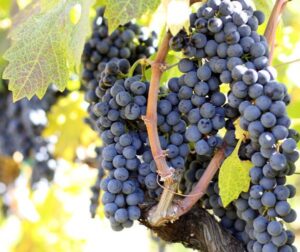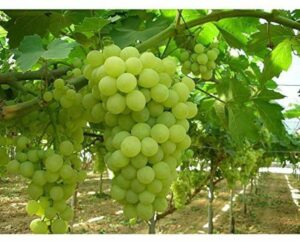South Africa, with its varied climates and rich soils, presents an ideal environment for growing table grapes. This in-depth guide aims to provide South African home gardeners with comprehensive insights into cultivating these delightful fruits, from selecting suitable varieties to managing common challenges.
Understanding Table Grape Varieties
The choice of grape variety is crucial. In South Africa, popular table grape varieties include:




Climate and Regional Suitability
South Africa’s diverse climate zones influence grape cultivation:
Western Cape: A Mediterranean Haven
- Best Varieties: The Western Cape’s Mediterranean climate is ideal for many table grape varieties. Favorable choices include ‘Sugraone’ (Superior Seedless), ‘Crimson Seedless’, and the classic ‘Thompson Seedless’. These varieties enjoy the warm, dry summers and mild, wet winters of the region.
Eastern Cape: Diverse Climatic Conditions
- Best Varieties: In the Eastern Cape, where climates can vary significantly, ‘Barlinka’ and ‘Victoria’ (Red Globe) are excellent choices. These varieties can adapt to the varying conditions, from coastal zones to the interior.
Northern Cape: Hot and Sunny

- Best Varieties: The Northern Cape’s hot, dry climate is suited for robust varieties like ‘Flame Seedless’ and ‘Sultana’ (Thompson Seedless). These grapes thrive under the intense sun and can tolerate the drier conditions.
Free State: Emerging Grape Territory
- Best Varieties: The Free State’s challenging climate calls for hardy varieties. ‘Dauphine’ and ‘La Rochelle’ are recommended for their adaptability to variable conditions and their resistance to diseases.
Gauteng: Urban Vineyards
- Best Varieties: In the urban landscapes of Gauteng, compact varieties like ‘Regal Seedless’ and ‘Prime Seedless’ do well. They are suitable for smaller gardens and can adapt to the urban microclimates.
KwaZulu-Natal: Subtropical Abundance
- Best Varieties: The humid, subtropical climate of KwaZulu-Natal is great for ‘Sugraone’ and ‘Sunred’, as these varieties can handle the humidity while still producing sweet, juicy grapes.
North West: Warmth and Sunshine
- Best Varieties: In the warm climate of the North West province, ‘Flame Seedless’ and ‘Bonheur’ are recommended. These grapes thrive in the warm conditions, producing sweet and flavorful fruits.
Mpumalanga: High-Altitude Vineyards
- Best Varieties: The cooler, high-altitude areas of Mpumalanga are suitable for ‘Waltham Cross’ and ‘Sugraone’. These varieties benefit from the cooler nights, which help develop the grapes’ flavors.

Limpopo: The Northern Heat
- Best Varieties: In Limpopo, heat-tolerant varieties like ‘Sultana’ and ‘Selma Pete’ are ideal. They can withstand the higher temperatures while still producing high-quality fruit.
Site Selection and Soil Preparation
Grapes require a location with full sun exposure and well-draining soil. They are adaptable to different soil types but prefer a pH between 6.0 and 7.0. Before planting, it’s advisable to conduct a soil test and amend the soil with organic matter if necessary.
Planting and Training
Grapevines are typically planted in late winter or early spring. The key steps include:
- Spacing: Plant vines 6-8 feet apart to ensure adequate air circulation.
- Depth: Plant at the same depth as the nursery pot or slightly deeper.
- Training Systems: Trellises or arbors are essential for supporting the vines. The Four-Arm Kniffin system is popular for table grapes.
Watering and Fertilization
- Watering: Grapes require deep watering, especially during the growing season. Drip irrigation is effective in ensuring deep water penetration.
- Fertilization: A balanced fertilizer should be applied in early spring. Avoid high nitrogen fertilizers as they can promote excessive vegetative growth at the expense of fruit production.
Pruning and Canopy Management
Pruning is vital for grape health and productivity. It’s typically done in late winter:
- First Year: Focus on establishing a strong trunk.
- Subsequent Years: Prune to maintain the structure and remove excess growth.
- Canopy Management: Ensure the canopy is not too dense to facilitate sunlight penetration and air circulation, reducing disease risk.

Pest and Disease Control
Common pests include aphids and birds, while powdery mildew and botrytis are prevalent diseases. Integrated Pest Management (IPM) strategies, including cultural and biological controls, are recommended.
Harvesting and Storage for Grapes
- Harvesting: Grapes are usually ready for harvest when they are fully colored and sweet to the taste. This typically occurs in late summer or early fall.
- Storage: Grapes should be refrigerated and can be stored for several weeks.
Challenges and Solutions
- Climate Adaptation: Select varieties that are suited to your specific regional climate.
- Water Management: Over-watering can lead to root diseases, while under-watering during fruit development can reduce yield.
- Pest and Disease Management: Regular monitoring and adopting eco-friendly control methods can mitigate these challenges.
Conclusion
Growing table grapes in a South African home garden can be a highly rewarding endeavor. By carefully selecting the right variety for your region, providing proper care, and managing pests and diseases effectively, you can enjoy a bountiful harvest of fresh, juicy grapes right from your backyard. Whether for snacking, salads, or simply enjoying the beauty of the vine, homegrown grapes offer a delightful addition to any South African garden

